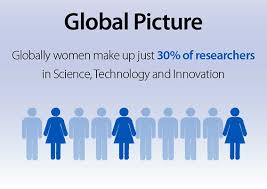Women in Research

Women’s History Month is a celebration of women’s contributions to history, culture and society and observed annually in the month of March in the United States since 1987. Author Diane Mariechild’s quote says it all, “A woman is the full circle. Within her is the power to create, nurture and transform.” Today let’s talk about the role of women in underrepresented fields: Research, Science and Technology.
Florence Nightingale
Throughout history, women have played significant roles in addressing some of the world’s most urgent social justice issues. Florence Nightingale, a statistician, became the first female member of the Royal Statistical Society in 1858. She collected and presented data in ways that changed nursing and health policy practices. The scientific world has credited her for using the power of data to reform health care in the 19th and 20th centuries. And she is just one example of what women can do in this field.
Women in Research
Today, less than 30% of the world’s researchers are women. This could be because of the lack of access to educational opportunities throughout history. Women were not allowed to attend public universities until 1836, then Wesleyan College became the first women’s college in the United States and worldwide. The desire for women to take part in higher education grew, but struggled to obtain equal access to it. Many Ivy League schools refused to admit women into undergraduate programs until the 1960s and then preferred them to enroll in “sister schools” on a separate campus away from male students.
Higher-Paying STEM Areas
Giving women equal opportunities to pursue and thrive in STEM careers can narrow the gender pay gap. Moreover, it enhances women’s economic security, ensures a diverse workforce, and prevents biases in these fields. According to Pew Research Center a typical STEM worker earns two-thirds more than those employed in other fields. And some of the highest-earning STEM occupations, such as computer science and engineering, have the lowest percentages of women workers.
Women are Underrepresented
By the time students reach college, women are significantly underrepresented in STEM majors. Around 21% of engineering majors and around 19% of computer and information science majors are women. Overall, college-educated women hold six of the 10 lowest-paying non-STEM college majors, mainly in social sciences and liberal arts.
Women in Leadership – Moving Forward
Women in leadership roles are well-positioned to empower the next generation of female leaders to do the same. “Here’s to strong women. May we know them. May we be them. May we raise them.”
Woman Owned – Cardinal Staffing Services – Finding Jobs since 1994
Cardinal Staffing Services is not just any staffing company, it is a place you can be inspired to reach the goal of your dreams. The Cardinal Culture is about empowerment. We treat our customers and candidates with respect, dignity, and appreciation. We make positive decisions every day that impacts our valued clients, our candidates, and our communities. Contact us today!